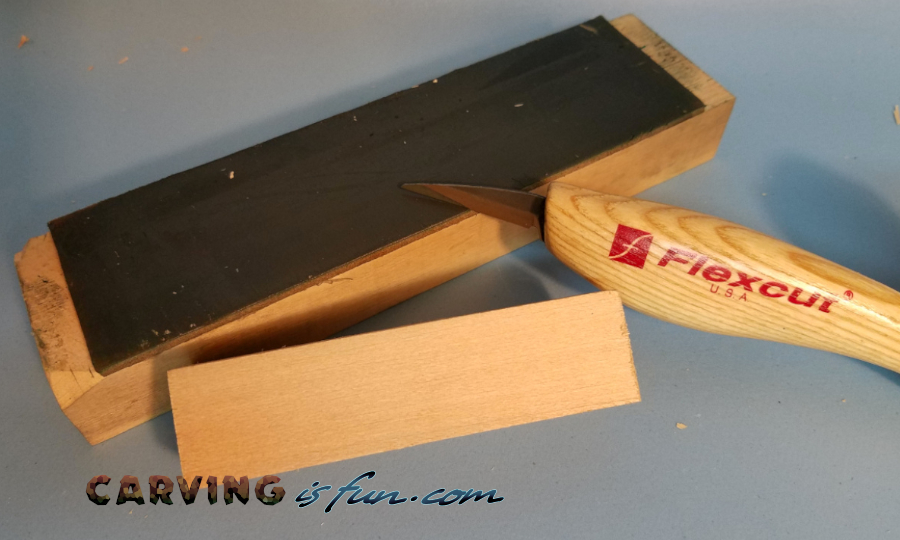Whittling is one of my favorite pastimes and a hobby I can take with me anywhere! The ability to make art with only a few tools and a block of wood makes the barrier to entry extremely low, making whittling accessible to almost anyone!
I had previously been whittling for years with just my pocket knife, but I’ve found that using a knife designed to whittle wood makes the task even more enjoyable! Pair that with easy-to-carve wood and the right sharpening tools, and the quality of your experience will rise to a whole new level.
For a basic overview of everything whittling-related for when you’re first starting out, CLICK HERE to check out my Complete Beginner’s Guide to Whittling.
Sharp Whittling Knife
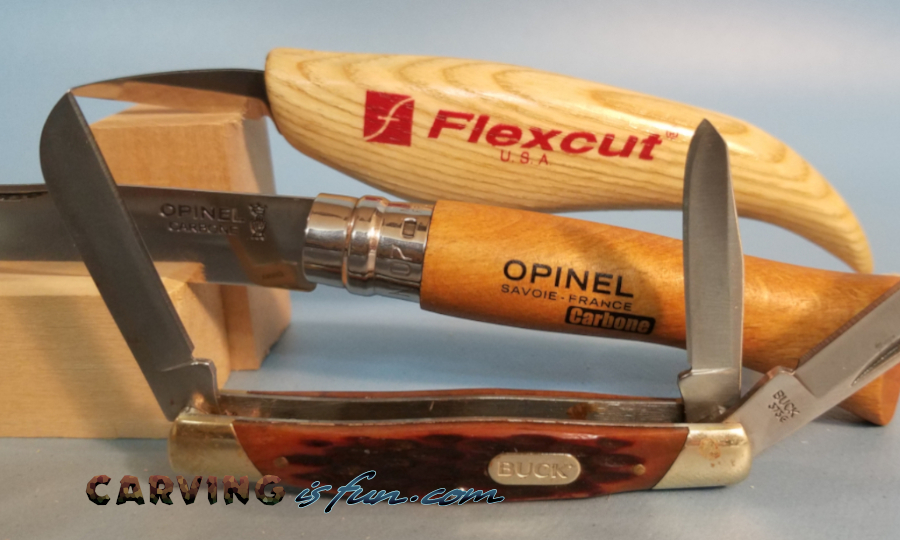
The first and most important thing to focus on is having a sharp knife dedicated to whittling. By reserving this knife only for the act of whittling, you will keep the razor sharp edge intact and avoid having to do much maintenance on on the blade.
Without a quality whittling knife, it will be much harder to slice through the wood, increasing your chance of injury and reducing the quality and ease of your experience. Not all knives are made the same. In fact, most knives are a poor fit for detailed whittling.
Lets go over what individual traits make a specialized whittling knife better than your general run-of-the-mill pocket knife.
High Carbon Steel vs. Stainless Steel
TI’ve heard some people claim steel knives are all the same. However after owning several dozen different knives from a wide range of different manufactures, I now know this to not be true.
There are two primary types of steel used in whittling knives: stainless steel and high carbon steel. At a glance, they may seem the same to the average user, but there are some important differences to keep in mind.
– Regular Stainless Steel
Your general purpose stainless steel knives (420J2, 440, 440A) are tough enough to make an effective knife in the kitchen or at the campsite, but not hard enough to hold a nice sharp edge for long periods of time. This does not make them ideal for whittling
These “softer” steels are usually found in general purpose pocket knives and high impact cutting tools like machetes. Stainless steel does, however, have the benefit of higher corrosion resistance and is less likely to chip.
– High Carbon Steel
A popular option for whittling knives is high carbon steel (440HC and similar) as these knives can hold a fine razor sharp edge for longer than regular stainless steel knives. The added carbon makes the metal harder.
High carbon steel knives are harder to sharpen, but once sharpened, they keep that razor edge longer than their stainless steel counterparts, making them ideal for whittling. Unfortunately, though, there are a few trade-off. One is that they are more prone to corrosion and rust if not properly taken care of. Additionally, high carbon steel knives are considered to be more brittle, and thus easier to chip if mishandled or dropped.
There are other types of steel with varying additives and different production processes as well, like some tempered steels. See the chart below, which compare some of these different types of steel and a sample of a few popular companies who produce them.
Ideal Steel Hardness
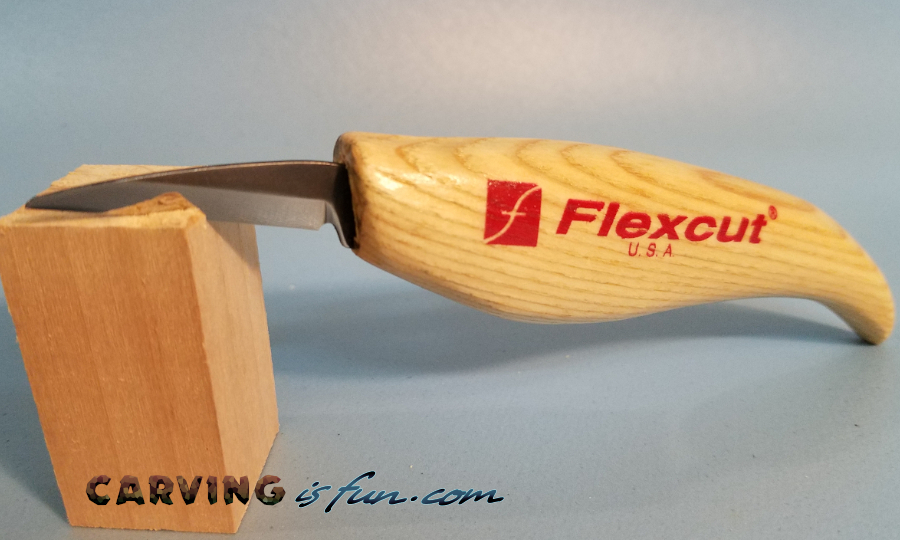
When you are whittling with a softer steel, you will notice the knife becoming dull more quickly than a more durable steel would.
A popular way to rate the hardness level on knives is know as Rockwell Hardness Testing. A metals scale of hardness is determined by comparing how deep of an indentation is made with the test tool with different loads or pressures.
The ideal Rockwell Hardness values (RC) for whittling knives is between 58 and 62. Knives with an RC less than 58 will dull more quickly, while knives with an RC greater than 62 are more more brittle, making the blade edge more susceptible to chipping during use.
Most every day carry knives will only have an RC value of 54 to 56 and don’t hold their edge for nearly as long as one would need for whittling. You will find that the knife must be sharpened more frequently while you are removing wood from your project.
Here are several examples of various knives and their hardness values to compare against. Keep in mind, many knife companies use several different quality steel knives and are not all represented below.
| Company | Steel Type | Rockwell Hardness Value (RC) |
| Flexcut | High Carbon Spring Steel | 59-61 |
| Helvie | High Carbon Steel | 59-61 |
| OCC | O1 | 59-61 |
| Beavercraft | 30MnB5 | 58-62 |
| Pfeil | Special Alloy Tool Steel | 57-60 |
| Opinel | XC90 Carbon Steel | 57-59 |
| Victorinox | Martensitic Stainless Steel | 56 |
| Leatherman | 420HC | 54-56 |
| Leatherman | 154HC | 58-60 |
| Buck | 420HC | 58 |
| Buck | 154CM | 59-61 |
| Gerber | 420HC/425MOD | 54 – 56 |
| Gerber | 440A | 57-59 |
| Gerber | 440C/154CM | 58-60 |
| Old Timer | 65Mn Carbon Spring Steel | 53-55 |
| Old Timer | 7Cr17MoV | 57-59 |
Ideal Blade Angle
Another important factor in an effective whittling knife is how steep of a cutting edge angle you have on the knife.
Depending on the whittling knife, you can expect a cutting edge anywhere between a 12 degrees to 30 degrees. The knives with smaller angles usually have a thinner blade and allow you to slice through the wood more easily, while the knives with larger angles tend to maintain their edge longer.
I like to keep knives with varying angles to use if I need to slice off some wood or cut down directly into the wood. In the beginning I tried using my thin, super-sharp knife to cut directly down into the wood with a slicing motion but ended up damaging the edge instead. I admit that it was likely user error, but now I use thicker blades like the Flexcut knives to do more rigid cuts.
Comfortable Handle
It is easy for time to get away from you while working on a project, and the next thing you know, you’ve been carving away for an hour or more! If your knife isn’t comfortable to hold for long periods of time, your hand might start getting sore.
You will want to use a knife that fits the length of your hand and is comfortable to hold. There are a lot of different handles available, but I find the rounded handles to be the most comfortable.
One of my favorite knives to use has a blocky handle and starts to become uncomfortable in the hand if used for long periods of time. It’s a shame because it has a great whittling edge that shaves off wood very fast. I will probably modify the handle later on to fit my hand better.
Recommended Whittling Knives

After testing out more than a dozen different whittling knives from various companies, I have found three knives that are perfect for anyone wanting to pick up their first set of knives.
– Flexcut Knives
Flexcut knives are perfect for beginners as they come razor sharp right out of the box and have a slightly thicker edge to help prevent damage from common beginner mistakes and mishandling.
These knives are also some of the most affordable knives on the market and can be purchased in kits to save even more money per knife.
One of the best places I have found to buy them is on Amazon as they often have the best prices year round. Click here to check out the current prices on Amazon.
– OCC Knives
OCC whittling knives have a very nice sharp and thin blade that can shave wood quickly. I like to use these for slicing off slivers of wood parallel to the woods surface. They are a bit more expensive than the Flexcut knives but are made very well.
I am more hesitant to suggest this knife to new whittlers as the blade edge is thin and can be easily damaged if used incorrectly. I would pick this up at a later date and stick to the Flexcut knives if you are new to whittling.
The best place to pick one up is TreelineUSA.com. They have a great selection of knives and are a wonderful source for basswood as well!
– Opinel Carbon Steel Folding Knives
If you want a nice affordable folding whittling knife that you can put in your pocket, the Opinel Carbon Steel Folding knifes may be perfect for you!
These have and thin blades made with quality durable steel that folds up, making it perfect for whittling on the go! The handle is very comfortable to hold, and if you get a No 6 or larger blade, they come with a very sturdy blade lock that keeps the blade from moving.
As I don’t have Amazon Prime, the cheapest place I have found to buy one is Ebay! These are super affordable and surprisingly sharp out of the box. Click here to check out the current prices on Ebay.
Wood to Whittle With
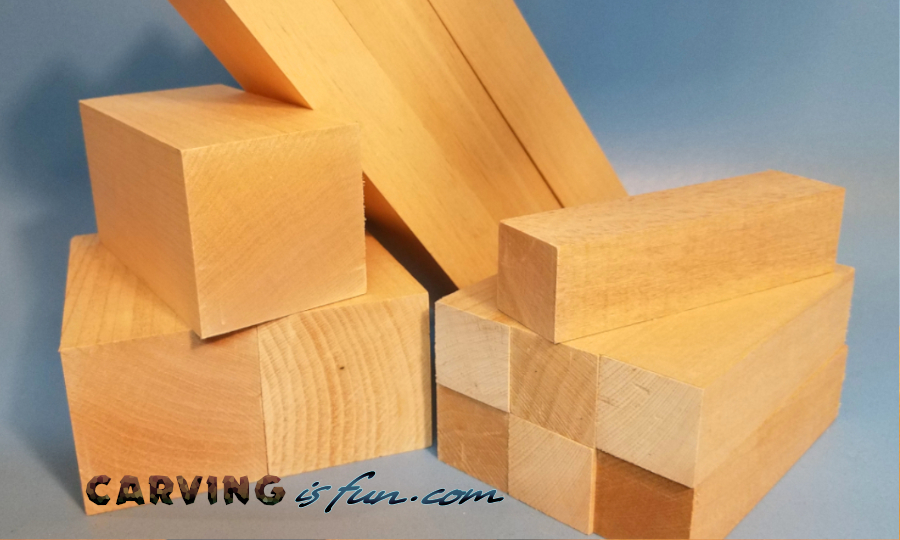
Without quality, soft wood for whittling you won’t have as great of a time carving shapes and figures. If the wood is too soft you won’t be able to add a lot of detail, and if it is too hard it will dull your blades faster and wear out your hands.
Sticks off the Ground
If you have the option, using the wood from the ground or cut from a tree is a great source of free wood! Just keep in mind that the wood on the ground may have already started to decompose and may be getting too soft to work with effectively.
I have made plenty of neat things from dead branches throughout the years. Most of the things I made were for camping, like tent stakes, spits to cook with over the fire and spoons and forks for eating. Several others were random animals and shapes to pass the time.
Basswood
The best wood to whittle with is basswood as it is soft enough to shape with a knife, hard enough to add fine details, and has a fine wood grain compared to that of pine, which makes it easier to whittle.
You will find that there are different qualities of basswood as well. If you want to get your hands on some high quality basswood, I would suggest heading over to Treeline USA.
Scrap Pieces of Lumber
You can always whittle scrap pieces of pine for your next project. Both Eastern and Western Pine are decent choices, as they have similar hardness as basswood. The main difficulty you may run across is coarseness of with wood grain,which may make it a bit harder for you to get the level of detail you want in your projects.
Buying Wood Online
I have two primary places I buy my whittling wood from, Treeline USA and Ebay. Between the two places, I can find high quality wood in various shapes and sizes. Plus, they even sell pre-shaped wood which makes it easy for beginners to get started. Click here to check out prices on Ebay for basswood.
Knife Sharpening Tools
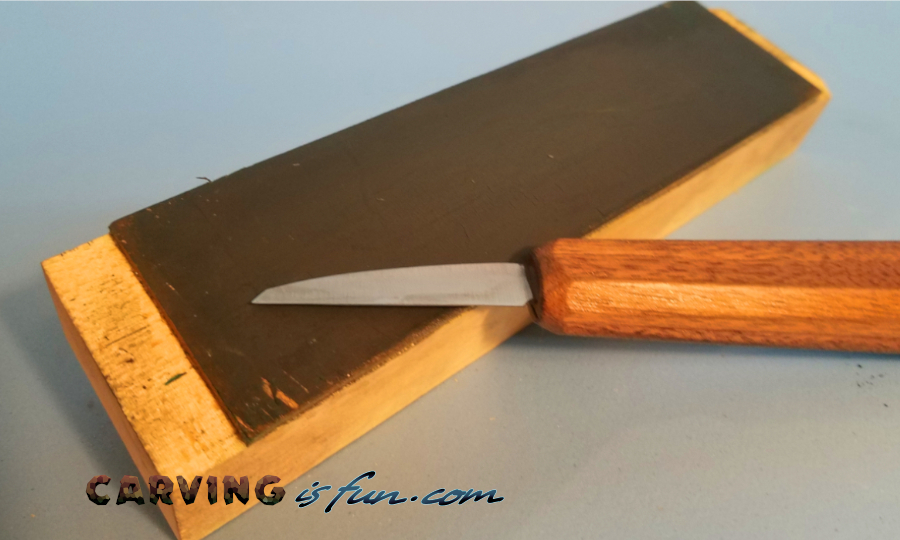
You may start off with a sharp knife, but even after using it for as little as 30 minutes, your blade will start to deform and dull.
You will want to have an easy way to realign your knife’s edge while you are working or the knife will start to lose its ability to cut effectively over time. These tools are cheap and you may already have them!
Leather Strop
Leather strops with polishing compound are going to be your go-to sharpening tool and essentially all you will need as long as you don’t damage the blade.
Using a leather strop will keep your sharp knives sharp without having to use a sharpening stone. I myself was skeptical of this claim at first because I have only ever used stones to sharpen my knives. I thought the strops were just a silly barber shop flair!
The fact is, if you want a razor sharp edge on your knife, you will need a strop. They – at bare minimum – help remove the excess burs and, when paired with polishing compound, will actually sharpen your knife by taking off a small amount of metal with each pass.
Sharpening Stones and Kits
Knife sharpening stones and kits are useful and will help bring a dull knife back up to snuff. They aren’t necessary if you use a strop, but it is never a bad idea to have one on hand as backup.
I highly recommend having both a coarse grit stone (400-600 grit) and a fine grit stone (800-1000 grit) so you can easily shape the knife with the coarse stone and smooth it out with the fine stone. Some of them are double sided as well, so you can get both stones in one!
Diamond Plates and Stones
I have always considered diamond sharpening plates overkill, but I won’t deny that they are extremely effective if you can afford them. If anything they are consistent and flat, allowing you to not have to worry about any dips in your sharpening stone from heavy use.
Many people swear by them and will use them over a sharpening stone. If you do have the opportunity to try one out, I suggest doing so to see if you like it.
Sandpaper
You can’t go wrong with some wet/dry sandpaper. It is are cheap and when glued to a block of wood (or any flat, rigid surface), it provides an affordable knife sharpening option.
I, myself, have a sheet of 1000 grit wet/dry sandpaper glued to a block of wood just in case I mess up one of my knives from misuse. Lately, I have been using it on a lot of the knives I have been testing for my reviews, which you can read by clicking here. Surprisingly enough, quite a few whittling knives don’t come pre-sharpened and ready to use.
Cut Resistant Gloves, Finger Guards and Athletic Tape
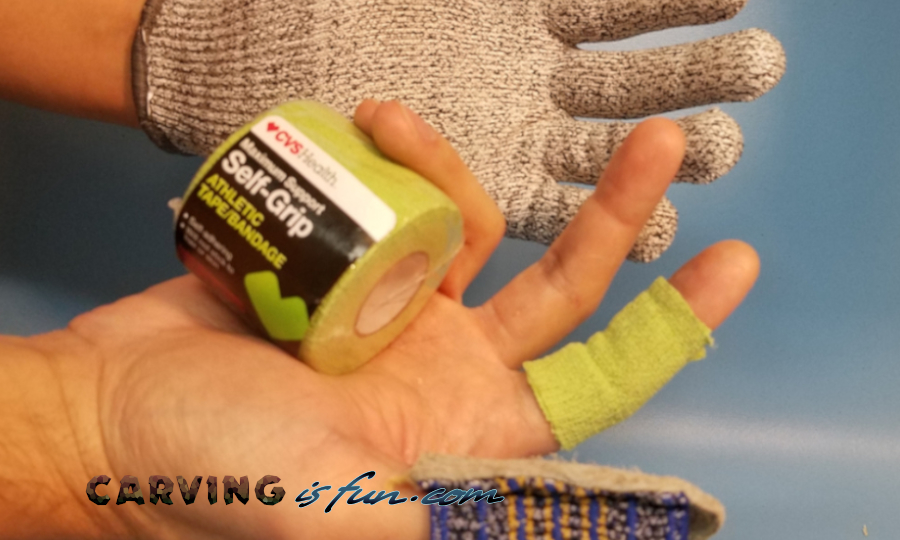
The people who have been doing this for decades may not need to wear gloves to whittle with, but if you are a beginner, I highly recommend wearing something to protect your hands while whittling.
For myself, I know that I can really get into a project and not pay full attention to where my fingers are sometimes. Wearing gloves or some other form of finger protection will make whittling a much less painful experience in the beginning.
Cut Resistant Gloves
Cut resistant glvoes are going to be the main barrior protecting your off-hand. Believe me; they’ve saved me from a few serious mishaps! They don’t tend to be expensive, but there are definitely some types that are better than others.
I would recommend you only wear them on the hand holding the wood (your off-hand), so you get the best grip possible on your knife.
The least expensive ones are the cut resistant fiber gloves that can be found for dirt cheap on amazon, Ebay, or any other place that sells cutlery. They will help prevent slices and cuts to your hand if you accidentally slip or forget where your thumb is.
Other options are the cut resistant gloves with a rubber palm or leather palm. These will help you hold on to your project more securely and not let the wood chips get stuck in the fibers of the glove. They are more expensive but a great option as well.
Finger Guards
Finger guards are an excellent and cheap option for a more minimalist approach. They are basically protective leather sleeves for your fingers!
I like them as they aren’t as hot as a glove and you don’t have to cover all of your fingers with them. I usually see people use the thumb and pointer finger guards with the rest of their fingers free to hold on to their project.
Athletic Tape
For a super cheap option that you can protect any of your fingers with, athletic tape is a great choice. I personally use this on the thumb of my knife hand to help prevent nicks from pearing cuts.
Another advantage to using athletic tape is that they are reusable and can make them as tight as you need. I usually wrap my finger to the point that they are snug and don’t move around but can still be easily removed for later use.
If you are ready to start whittling, check out my One Stop Whittling Resource Page for more information.

